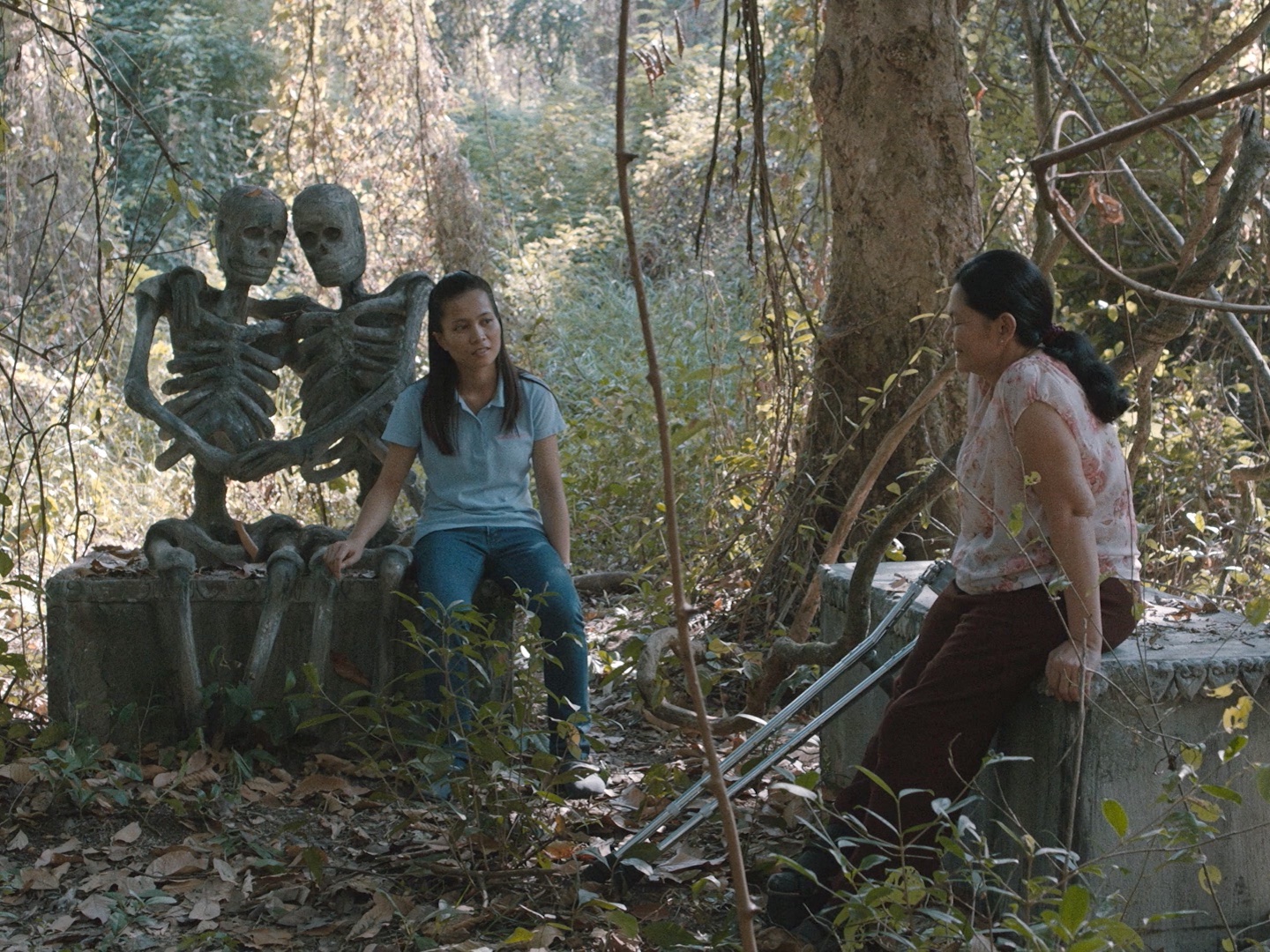
Soldiers in a small town in northern Thailand are struck with a mysterious sleeping sickness and are transferred to a temporary clinic in a former school.
EN
“There was a news story three years ago about a hospital in the north, where there was a mysterious disease that forced the hospital to quarantine 40 soldiers. I merged the image of the soldiers together with my hospital and my school in Khon Kaen. Over those three years, the political situation in Thailand had come to a dead end (up to the present actually). I was fascinated with sleeping and jotted down my dreams. I think it is a way to escape the terrible situations on the streets.”
Apichatpong Weerasethakul1
“Watching Apichatpong’s films in succession makes us realize that his works repeatedly refer to similar topics, if from subtly different angles in each work. The main stages and/or themes for his works are Isaan (Northeast Thailand), soldiers, hospitals (or doctors and patients), forests, supernatural topics such as ghosts and reincarnation, and so forth. Among these, medical practice is of pivotal importance. […] Even in the works where the stage is not the hospital itself, his medical gaze, so to speak, is palpable.”
Masato Fukushima2
“I used to be more concerned about the structure of the film and how the emotion derives from the physicality of the film. I was inspired by very experimental thinking – classic American experimental film, actually. But as I get older, I want to be more in tune with the characters, and my own merging with them. [...] I still do abstract ideas, but the terms of representing them is different. I quote a lot of cinema. Here I still quote, but it’s more of quoting myself.”
Apichatpong Weerasethakul3
“Apichatpong’s singular method is by now familiar: he looks at present-day realities through a prism of personal and collective memories, refusing to distinguish between the everyday, dream-states and dark fantasies, the latter more often than not rooted in the history of his medium.”
Tony Rayns4
“In the beginning, I was mainly interested in form, and not at all in narrative. But gradually, I felt the beauty of narrative in the world, and in Thailand. Up to a certain point, I think that trying to tell a story in a different way is probably more challenging than purely experimenting with forms.”
Apichatpong Weerasethakul5
- 1Apichatpong Weerasethakul, Cemetery of Splendour (Cologne: The Match Factory, 2015).
- 2Masato Fukushima, “Sick Bodies and the Political Body: The Political Theology of Apichatpong Weerasethakul’s Cemetery of Splendour”, in 2 or 3 Tigers (Berin: Haus der Kulturen der Welt, 2017).
- 3Eric Kohn, “Apichatpong Weerasethakul on Why 'Cemetery of Splendour' Will Be His Final Film in Thailand,” IndieWire, 2015.
- 4Tony Rayns, “Film of the week: Cemetery of Splendour,” Sight & Sound, July 2016.
- 5Bjorn Gabriels, “Longing for Change. The Shifting Shapes of Apichatpong Weerasethakul,” Sabzian, 1 juni 2016.
FR
« Bonjour, donc. Ce mot, entendu (et vu) à plusieurs reprises dans Cemetery of Splendour, y résonne singulièrement. Il y apparait surprenant, et presque toujours déplacé, puisque le film de d’Apichatpong Weerasethakul part d’une inversion: la Thaïlande est un lieu où le pouvoir a élevé un mur si grand que le ciel est masqué, et où ceux qui veillent vivent dans une nuit permanente. Les militaires apparaissent alors comme des révélateurs : endormis, ils manifestent la réalité profonde du pays, menant un étrange combat d’arrière et d’avant-garde. Le « bonjour », dans ces conditions météorologico-politiques, perd de son évidence pour ressembler à une formule magique qui, à l’intérieur de la nuit-même, ouvre des brèches dans le mur et crée sa propre lumière. Formule du passage et du partage, il pourrait cristalliser toutes les dialectiques à l’œuvre dans Cemetery of splendour : sommeil et veille, visible et invisible, intérieur et extérieur. »
Lucie Garçon & Romain Lefebvre1
- 1Lucie Garçon et Romain Lefebvre, « Cemetery of Splendour, Apichatpong Weerasethakul, » Débordements, 9 novembre 2015.

